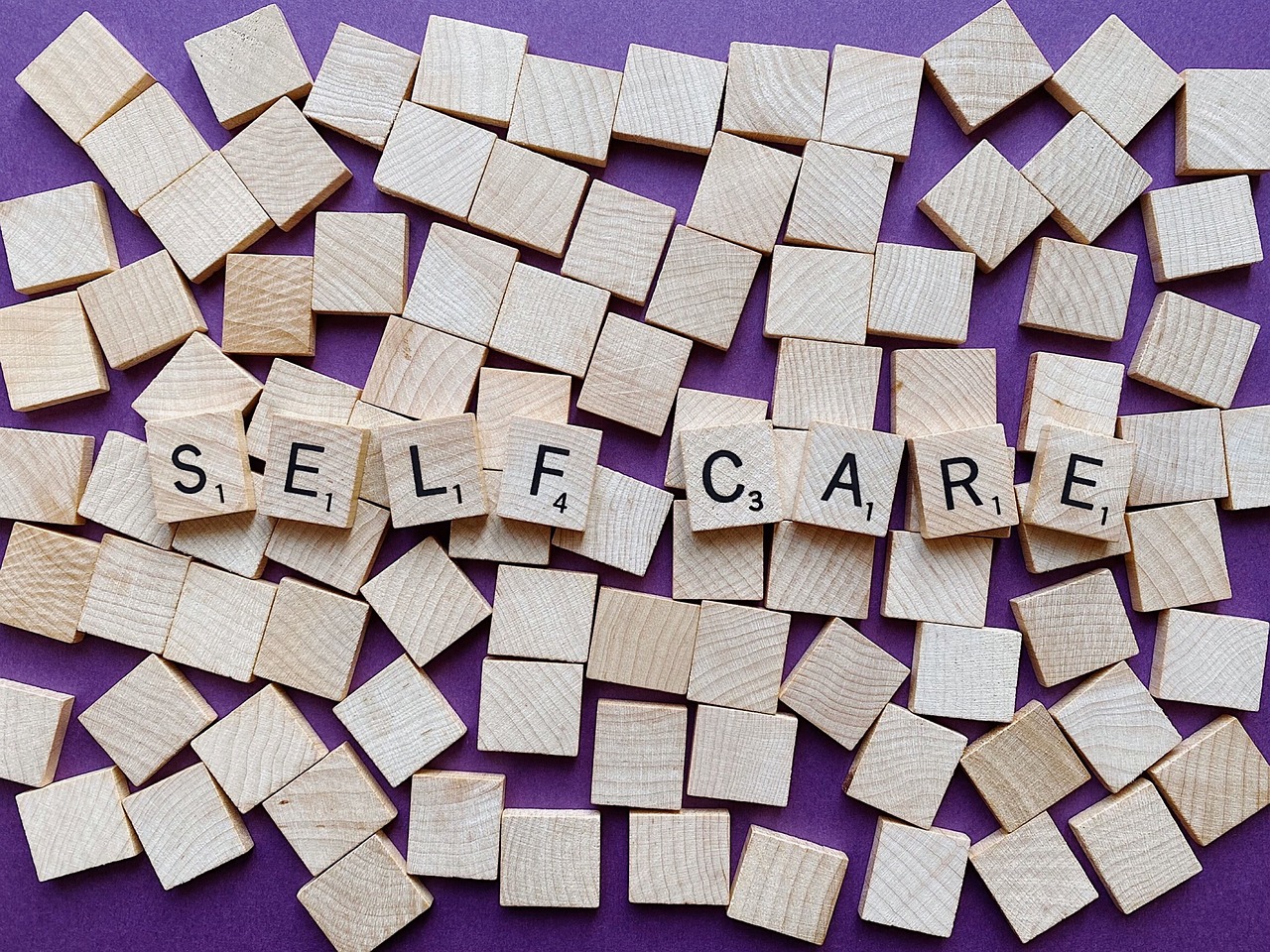How to Turn Fear into Power with Self-Defense Training?
Fear is a natural response, but what if you could transform that fear into a powerful tool for personal empowerment? Self-defense training offers an incredible opportunity to do just that. Imagine walking into a room filled with uncertainty, your heart racing, and then realizing you hold the skills to protect yourself. Self-defense isn't just about learning how to throw a punch or escape a hold; it's about cultivating a mindset that embraces strength and resilience. Through practical techniques and mental conditioning, individuals can conquer their fears and emerge more confident and secure.
When you engage in self-defense training, you're not merely learning physical techniques; you're embarking on a journey of self-discovery. Every kick, punch, and evade teaches you more about your own capabilities. As you practice, you begin to notice a shift in your mental landscape. The anxiety that once loomed large starts to shrink, replaced by a sense of empowerment. The transformation is profound—it's like moving from a dark room into the sunlight, where you can see the world clearly and feel a renewed sense of control.
Moreover, self-defense training fosters a community of like-minded individuals who share similar goals. This camaraderie creates a supportive environment where fears can be expressed and tackled collectively. In a society where personal safety is often a concern, finding such a community can be invaluable. You are not alone in your journey; others are walking the same path, sharing their experiences, and lifting each other up. This sense of belonging can further reduce feelings of isolation and anxiety, making the empowerment process even more impactful.
So, how does one begin this transformative journey? It starts with taking that first step—finding a self-defense class that resonates with you. Whether it's Krav Maga, Brazilian Jiu-Jitsu, or traditional martial arts, each discipline offers unique benefits. As you immerse yourself in the training, remember that the goal is not just to learn how to defend yourself physically but to cultivate a mindset of strength, resilience, and confidence. Through this training, fear becomes a catalyst for growth, propelling you towards a more empowered version of yourself.
In conclusion, self-defense training is more than just a set of skills; it’s a powerful tool for transforming fear into strength. By engaging in this practice, you can build confidence, improve mental health, and foster a sense of community. So, why wait? Embrace the journey and unlock the power within you!
- What is self-defense training? Self-defense training involves learning techniques and strategies to protect oneself from physical harm. It includes both physical skills and mental preparedness.
- Can anyone participate in self-defense classes? Yes! Self-defense classes are designed for individuals of all skill levels, ages, and backgrounds.
- How does self-defense training help with anxiety? Engaging in self-defense training can reduce anxiety by boosting confidence, providing coping strategies, and fostering a supportive community.
- What types of self-defense techniques will I learn? You will learn a variety of techniques, including striking, blocking, and evading, as well as mental strategies for dealing with fear and stress.
- How often should I practice self-defense? Regular practice is key to mastering self-defense techniques. Aim for at least one to two classes per week, along with personal practice at home.

The Psychological Benefits of Self-Defense Training
Engaging in self-defense training is like unlocking a hidden treasure chest of psychological benefits. It's not just about learning how to throw a punch or execute a perfect kick; it's about transforming your entire mindset. When you step onto the mat or into the dojo, you’re not just training your body; you’re also training your mind. This journey significantly boosts your mental health, reduces anxiety, and enhances your self-esteem. Imagine walking into a room filled with confidence, knowing that you have the skills to protect yourself. That’s the power of self-defense!
One of the most profound psychological benefits is the reduction of anxiety. Many people live in a constant state of fear, worrying about their safety and well-being. However, through self-defense training, individuals learn practical techniques that empower them to face their fears head-on. It’s like having a safety net; the more you practice, the more you realize that you can handle difficult situations. This newfound confidence can spill over into other areas of life, making daily challenges seem less daunting.
Moreover, self-defense training fosters a sense of community. When you train with others, you build relationships that can be incredibly supportive. You’re not just learning techniques; you’re also sharing experiences, which can help alleviate feelings of isolation. This camaraderie can lead to improved mental health and a greater sense of belonging. Just think about it: you’re surrounded by people who share your goals and aspirations, pushing each other to be better versions of themselves.
In addition to reducing anxiety and fostering community, self-defense training also enhances your self-esteem. As you master new skills and techniques, you begin to see yourself in a different light. You start to recognize your strength and resilience, which can be life-changing. It’s like looking in a mirror and seeing not just your reflection but a warrior ready to take on the world. This boost in self-esteem can lead to a more positive outlook on life, making you more willing to take risks and pursue your dreams.
To summarize, the psychological benefits of self-defense training are vast and profound. Here’s a quick look at some key benefits:
- Reduction of Anxiety: Learn to face fears with practical skills.
- Enhanced Self-Esteem: Mastery of techniques boosts self-confidence.
- Sense of Community: Build supportive relationships with fellow trainees.
In conclusion, self-defense training is more than just physical preparation; it’s a transformative journey that empowers individuals to conquer fear and build a resilient mindset. So, are you ready to take the first step towards a more confident and empowered you?

Understanding the Basics of Self-Defense Techniques
Self-defense training is akin to learning a new language; it requires understanding the fundamentals before you can express yourself fluently. Just as a child learns to form sentences before delivering a speech, mastering the basics of self-defense techniques is crucial for effective personal protection and confidence-building. This foundational knowledge not only equips individuals with practical skills but also instills a sense of empowerment that transcends physical confrontations.
At its core, self-defense involves a combination of physical techniques and mental preparedness. It’s not just about throwing punches or executing fancy moves; it’s about understanding your environment, recognizing potential threats, and responding appropriately. The basics of self-defense can be broken down into several key areas:
- Striking Techniques: These are the offensive moves you’ll need to defend yourself. They include punches, kicks, and elbow strikes that can incapacitate an attacker.
- Defensive Maneuvers: These techniques focus on protecting yourself from incoming attacks. This includes blocking and evading, which are essential for minimizing harm.
- Body Awareness: Understanding your own body mechanics and how to use your body effectively is crucial in any self-defense situation. This awareness enhances your ability to react quickly and efficiently.
Before diving into advanced techniques, it's essential to practice these fundamentals regularly. Think of it like building a house; without a solid foundation, the structure is bound to crumble. The more you train, the more instinctive these movements become, allowing you to respond to threats with confidence and clarity. Remember, self-defense is not just a physical skill; it’s a mental game as well. You need to be aware of your surroundings and trust your instincts.
In addition to physical techniques, understanding the legal implications of self-defense is vital. Knowing when and how to use these techniques legally can protect you from further complications after an encounter. Self-defense laws vary by location, so it’s important to familiarize yourself with the regulations in your area. This knowledge not only empowers you but also gives you peace of mind, knowing you can protect yourself without overstepping legal boundaries.
As you embark on your self-defense journey, keep in mind that practice makes perfect. Regular training sessions will help solidify your skills, making them second nature when you need them most. Engaging in drills and sparring with a partner can simulate real-life scenarios, enhancing your ability to react under pressure. The key is to stay committed, remain patient, and embrace the learning process. Each step you take in mastering these basics is a step toward transforming fear into power.

Striking Techniques
When it comes to self-defense, mastering is crucial. These techniques not only empower you to defend yourself but also instill a sense of confidence that can transform your approach to everyday challenges. Imagine being able to channel your fear into a powerful punch or kick, effectively turning a moment of panic into a moment of strength. Striking techniques can be broken down into various categories, each designed for specific scenarios. Among the most effective are punches and kicks, which serve as your primary tools for self-defense.
Punches are often the first striking technique that comes to mind. They are straightforward yet incredibly effective when executed correctly. A well-placed jab or cross can create enough distance between you and an aggressor, allowing you to escape. It's essential to practice your form—keeping your wrist straight, using your body weight to generate power, and targeting vulnerable areas such as the nose or jaw. On the other hand, kicks can provide a greater range and power, especially when aimed at the lower body. Techniques like the front kick or roundhouse kick can incapacitate an attacker, giving you a crucial advantage.
Understanding the mechanics of striking is only part of the equation. You also need to know when and how to apply these techniques effectively. For instance, using a punch to block an attack can be a game-changer, allowing you to transition from defense to offense seamlessly. This is where practice comes into play. Regular training helps you develop muscle memory, enabling you to react instinctively in high-pressure situations. The more you train, the more comfortable you will become with your striking techniques, ultimately enhancing your overall self-defense skills.
To further illustrate the importance of striking techniques, let’s take a look at a few essential methods:
| Technique | Description | Target Area |
|---|---|---|
| Jab | A quick, straight punch used to create distance and gauge an opponent's reach. | Face, specifically the nose or chin. |
| Cross | A powerful punch thrown with the dominant hand, typically following a jab. | Jaw, temple, or ribs. |
| Front Kick | A kick delivered straight forward, aiming to push an opponent away. | Groin or stomach. |
| Roundhouse Kick | A circular kick that targets the side of an opponent. | Thigh, knee, or head. |
Incorporating these striking techniques into your self-defense training can significantly enhance your ability to protect yourself. However, it's important to remember that the goal of self-defense is not just to fight back but to create an opportunity to escape. Therefore, always prioritize safety and awareness in any situation. As you practice these techniques, you'll find that your confidence grows, and your fear diminishes, allowing you to navigate the world with a newfound sense of empowerment.

Target Areas for Strikes
When it comes to self-defense, knowing where to strike can make all the difference in a critical situation. It's not just about throwing punches or kicks; it's about targeting vulnerable areas of the body that can incapacitate an attacker quickly and effectively. Understanding these target areas can empower you to respond with confidence and decisiveness, transforming fear into action.
Several key areas on the human body are particularly sensitive and can be exploited for self-defense purposes. These include:
- Eyes: Striking or poking the eyes can temporarily blind an attacker, giving you a crucial moment to escape.
- Nose: A strong strike to the nose can cause pain and disorientation, making it difficult for the attacker to continue their advance.
- Throat: A well-placed strike to the throat can disrupt breathing and cause significant distress, allowing for a quick getaway.
- Solar Plexus: A hit to this area can knock the wind out of someone, incapacitating them momentarily.
- Groin: This is perhaps one of the most well-known target areas. A strike to the groin can cause intense pain and provide you with a chance to escape.
By focusing on these vulnerable areas, you can maximize the impact of your strikes. But remember, it's not just about the physical act of striking; it's also about the mental preparation that comes with self-defense training. Knowing where to hit can instill a sense of confidence and readiness that is invaluable in a threatening situation.
Additionally, practicing these techniques in a controlled environment, such as a self-defense class, allows you to become familiar with the movements and the necessary precision. The more you practice, the more instinctive these actions will become, and this muscle memory can be a lifesaver when adrenaline is pumping and fear is at its peak.
Ultimately, self-defense is about empowerment. It's about taking control of your safety and well-being. By understanding the target areas for strikes, you not only equip yourself with practical knowledge but also cultivate a mindset that prioritizes your safety and confidence in any situation.
Q: What should I do if I can't remember the target areas in a stressful situation?
A: It's completely normal to feel overwhelmed during a confrontation. Regular practice and training can help embed this knowledge into your muscle memory, making it more instinctive.
Q: Is it necessary to learn all target areas, or should I focus on a few?
A: While it's beneficial to know multiple target areas, focusing on a few that you feel comfortable with can be more effective. Mastery over a few techniques often leads to better performance in real-life situations.
Q: Can self-defense training help with confidence outside of physical confrontations?
A: Absolutely! Many individuals find that the skills and confidence gained from self-defense training translate into various aspects of their lives, enhancing their overall self-esteem and assertiveness.

Defensive Maneuvers
When it comes to self-defense, striking is just one piece of the puzzle. play a crucial role in ensuring your safety and can often be the difference between escaping a dangerous situation and facing harm. Imagine being in a high-pressure scenario where every second counts; knowing how to effectively block or evade an attack can give you the upper hand. This is where defensive techniques come into play, allowing you to protect yourself while minimizing the risk of injury.
Defensive maneuvers can be broadly categorized into two main types: blocking and evading. Each of these techniques serves a distinct purpose and can be applied depending on the situation at hand. For instance, when an assailant throws a punch, a well-timed block can deflect the attack and create an opportunity for you to counter. On the other hand, evasion techniques, such as sidestepping or ducking, can help you avoid an incoming strike altogether, keeping you out of harm's way.
Practicing these maneuvers regularly not only enhances your physical ability but also builds muscle memory, allowing you to react instinctively in real-life situations. Consider the following common defensive maneuvers:
- Blocking: Using your arms or hands to shield yourself from strikes.
- Parrying: Redirecting an attack away from your body using a quick movement.
- Evading: Moving out of the way of an attack to avoid contact.
- Covering: Protecting vital areas of your body with your arms or hands.
To effectively incorporate these techniques into your self-defense repertoire, consider enrolling in a self-defense class where you can receive hands-on training from experienced instructors. They can provide you with valuable feedback on your technique and help you refine your skills. Moreover, practicing these maneuvers with a partner can simulate real-life scenarios, making your training more effective and realistic.
Ultimately, the goal of defensive maneuvers is to create a safe space for yourself in a threatening situation. By mastering these techniques, you not only enhance your physical capabilities but also cultivate a sense of empowerment and confidence in your ability to handle adversity. Remember, self-defense is not just about fighting back; it's about being smart, aware, and prepared to protect yourself when necessary.
Q: What are the most effective defensive maneuvers for beginners?
A: For beginners, focusing on basic blocking and evasion techniques is essential. Learning how to effectively shield yourself and move away from attacks can significantly improve your self-defense skills.
Q: How often should I practice defensive maneuvers?
A: Regular practice is key. Aim for at least two to three times a week, incorporating both solo drills and partner exercises to enhance your skills.
Q: Can defensive maneuvers be learned online?
A: While online resources can provide valuable information, hands-on training with a qualified instructor is highly recommended for mastering defensive maneuvers effectively.

Building Confidence Through Training
When you step onto the mat for self-defense training, you're not just learning how to throw a punch or execute a kick; you're embarking on a transformative journey that can significantly boost your confidence. Imagine walking into a room filled with strangers, and instead of feeling anxious, you radiate self-assurance. This is one of the incredible benefits of consistent self-defense practice. As you master techniques and improve your physical abilities, you also build a mental fortress that shields you from insecurity.
One of the key reasons self-defense training enhances confidence is the empowerment that comes from knowledge. Knowing that you have the skills to protect yourself in a challenging situation can be a game-changer. It’s like having a secret weapon; you feel ready to face whatever life throws at you. Each time you practice, you not only refine your physical abilities but also reinforce your mental resilience. You learn to trust yourself, and that trust is the cornerstone of confidence.
Moreover, the community aspect of training plays a significant role in boosting confidence. When you train with others, you share experiences, challenges, and victories. This camaraderie fosters a supportive environment where everyone encourages one another. You realize that you’re not alone in your journey; others share similar fears and aspirations. This collective spirit can be incredibly uplifting and can propel you to push past your limits.
Additionally, self-defense training often involves setting and achieving goals. Whether it’s mastering a new technique or successfully defending against a simulated attack, each accomplishment adds to your confidence bank. You start to recognize that you are capable of more than you thought. As you tick off these goals, you build a sense of achievement that spills over into other areas of your life. It’s like a ripple effect; the confidence gained on the mat translates to your personal and professional life.
To illustrate the impact of self-defense training on confidence, consider the following table that highlights various aspects of confidence-building through training:
| Aspect | Description |
|---|---|
| Skill Mastery | Regular practice leads to improved techniques, which boosts self-assurance. |
| Knowledge Empowerment | Understanding self-defense strategies increases feelings of safety and control. |
| Community Support | Training with others creates a supportive network that encourages growth. |
| Goal Achievement | Setting and accomplishing training goals enhances self-esteem and motivation. |
Ultimately, the journey of building confidence through self-defense training is as much about the physical skills as it is about mental fortitude. It’s about facing fears head-on and emerging stronger on the other side. So, if you’ve ever doubted your ability to handle a tough situation, remember that with each training session, you’re not just learning to defend yourself; you’re transforming fear into power.
- How long does it take to see improvements in confidence from self-defense training? Many individuals notice a boost in confidence within a few weeks of consistent training.
- Is self-defense training suitable for everyone? Yes, self-defense training is beneficial for people of all ages and fitness levels.
- What if I'm not physically strong? Self-defense techniques often rely on strategy and technique rather than brute strength.
- Can self-defense training help with anxiety? Absolutely! Many practitioners find that the skills learned in self-defense help reduce anxiety in various situations.

Overcoming Fear with Scenario-Based Training
Fear can be a formidable barrier, often paralyzing us in situations where we need to act decisively. However, scenario-based training is a powerful method to help individuals confront and overcome this fear. By simulating real-life situations, participants can practice their self-defense skills in a controlled environment, making it easier to respond effectively when faced with actual threats. Imagine stepping into a training room, where the atmosphere is charged with anticipation, and the stakes feel real, yet you know you’re in a safe space to learn and grow.
One of the most significant advantages of scenario-based training is that it allows individuals to experience the adrenaline rush of a confrontation without the real-world consequences. This controlled exposure helps desensitize participants to fear, making them more resilient in high-pressure situations. During training sessions, instructors often create various scenarios that mimic potential threats, enabling trainees to practice their responses. For example, a common scenario might involve an unexpected approach from an assailant, forcing the trainee to decide quickly whether to evade, strike, or escape.
These training exercises are not just about physical responses; they also focus on mental preparedness. As trainees engage in role-playing exercises, they learn to assess situations rapidly, weighing their options and making split-second decisions. This is crucial because, in real life, we often don’t have the luxury of time to think things through. By repeatedly practicing these scenarios, individuals can develop a mental toolkit that enhances their decision-making skills under pressure.
Role-playing exercises are a key component of scenario-based training. They allow participants to step into the shoes of both the defender and the aggressor, creating a deeper understanding of the dynamics involved in a confrontation. For instance, one participant may act as the attacker while another practices defending themselves. This not only builds empathy but also provides insights into what an aggressor might do, enabling trainees to anticipate moves and react accordingly. The beauty of role-playing is that it fosters a safe environment to make mistakes and learn from them without fear of real-world repercussions.
In addition to role-playing, stress inoculation techniques are vital in preparing individuals for the emotional and psychological challenges of self-defense situations. These techniques involve gradual exposure to stressors, allowing participants to build their tolerance to fear and anxiety. For example, an instructor might introduce unexpected loud noises or sudden movements during a training session, simulating the chaos of a real altercation. By practicing under these conditions, individuals learn to maintain their composure and focus, ultimately enhancing their performance when it matters most.
In conclusion, scenario-based training is an invaluable tool for anyone looking to overcome fear and build confidence in their self-defense abilities. By engaging in realistic simulations, role-playing exercises, and stress inoculation techniques, individuals can transform their fear into a source of power. So, the next time you feel that familiar twinge of fear, remember that with the right training, you can harness that energy and turn it into a decisive action!
- What is scenario-based training? Scenario-based training involves practicing self-defense techniques in simulated real-life situations to prepare individuals for potential threats.
- How does role-playing help in self-defense training? Role-playing allows participants to experience both sides of a confrontation, enhancing their understanding of dynamics and improving their response strategies.
- What are stress inoculation techniques? These techniques involve gradually exposing individuals to stressors to help them build resilience and manage fear during high-pressure situations.
- Can self-defense training really help reduce anxiety? Yes, engaging in self-defense training can significantly boost confidence and reduce anxiety, empowering individuals to feel more secure in their ability to protect themselves.

Role-Playing Exercises
Role-playing exercises are a dynamic and engaging aspect of self-defense training that can significantly enhance your preparedness for real-life confrontations. Imagine stepping into a scenario where your instincts are put to the test, and your responses are crucial. These exercises are designed to simulate various situations you might encounter, allowing you to practice your skills in a controlled environment. This approach not only helps in honing physical techniques but also boosts mental agility and confidence.
During role-playing sessions, participants often take on different roles, which can range from the defender to the aggressor. This switch allows individuals to experience both sides of a confrontation, fostering a deeper understanding of the dynamics involved. For instance, when you play the role of the aggressor, you gain insight into the mindset of an attacker, which can be invaluable when formulating your defensive strategies. This dual perspective can be eye-opening, helping you to anticipate moves and react more effectively.
One of the most significant benefits of role-playing exercises is the opportunity to practice quick decision-making under pressure. In a real-life scenario, the adrenaline rush can cloud your judgment, making it hard to think clearly. However, by repeatedly engaging in these exercises, you train your brain to respond swiftly and effectively, reducing the likelihood of panic during an actual confrontation. The more you practice, the more instinctive your responses become, allowing you to act rather than react when faced with danger.
To make the most of role-playing exercises, it's essential to create realistic scenarios that reflect potential threats. Here are some examples of situations you might role-play:
- Walking alone at night and being approached by a stranger.
- Defending yourself against an attempted grab or hold.
- Escaping from a confined space when threatened.
Each scenario can be tailored to the skill level of the participants, ensuring that everyone is challenged but not overwhelmed. Additionally, incorporating feedback sessions after each role-play can enhance learning. Discussing what worked, what didn’t, and how to improve can solidify the lessons learned during the exercise.
Ultimately, role-playing exercises are not just about physical training; they are about building a mindset that embraces confidence and resilience. By immersing yourself in these scenarios, you learn to navigate fear, making it a powerful tool rather than a debilitating force. So, the next time you step onto the training floor, remember that each role-play is an opportunity to grow, learn, and empower yourself for whatever may come your way.
Q: What should I wear for role-playing exercises?
A: It’s best to wear comfortable clothing that allows for movement. Some training centers may provide protective gear, but check beforehand.
Q: How do I know if I’m ready for role-playing exercises?
A: If you have a basic understanding of self-defense techniques and feel comfortable practicing them, you’re likely ready to start role-playing.
Q: Can role-playing exercises help with anxiety?
A: Yes! By practicing in a safe environment, you can reduce anxiety and build confidence in your ability to handle real-life situations.

Stress Inoculation Techniques
When it comes to self-defense training, one of the most crucial aspects is preparing for the unexpected. are designed specifically to help individuals manage fear and anxiety in high-pressure situations. Imagine standing in a room filled with people, all eyes on you, as you prepare to demonstrate a self-defense technique. The heart races, palms sweat, and the mind races with doubts. This is where stress inoculation comes into play, acting as a shield against overwhelming emotions.
Essentially, stress inoculation is about exposure and preparation. By gradually introducing individuals to stressful scenarios, they learn how to cope with their feelings of fear and anxiety. For instance, during training, instructors might create simulated confrontations where participants must react quickly and decisively. This controlled environment allows trainees to experience the pressure of a real-life situation without the actual danger, enabling them to build resilience. Over time, this practice can significantly reduce the fight-or-flight response that often accompanies fear.
There are several techniques that are commonly used in stress inoculation training:
- Controlled Breathing: Learning to control one's breath can help calm the nervous system, allowing for clearer thinking during stressful situations.
- Visualization: By visualizing successful outcomes in self-defense scenarios, individuals can mentally prepare themselves for actual confrontations.
- Gradual Exposure: Participants engage in increasingly challenging scenarios, starting from low-stress environments and progressing to more intense situations.
These techniques not only enhance self-defense skills but also promote a sense of empowerment. When individuals practice these methods, they begin to understand that fear is not an enemy but rather a natural response that can be managed. As they become more comfortable with their abilities, they develop a greater sense of control over their emotions, which translates into confidence both inside and outside the training environment.
Moreover, the benefits of these techniques extend beyond self-defense training. They can be applied in various aspects of life, from public speaking to job interviews. The ability to remain calm under pressure is a valuable skill that can lead to success in many areas. By incorporating stress inoculation techniques into your self-defense training, you're not just preparing to defend yourself; you're also equipping yourself with tools to navigate life's challenges with confidence.
In conclusion, mastering stress inoculation techniques is essential for anyone looking to enhance their self-defense skills. By facing fears head-on, individuals can transform anxiety into power, making them not only more effective in self-defense situations but also more resilient in everyday life.
- What is stress inoculation training? Stress inoculation training involves exposing individuals to stressful situations in a controlled environment to help them manage anxiety and fear.
- How can stress inoculation techniques benefit me? These techniques can enhance your self-defense skills, improve your ability to stay calm under pressure, and boost your overall confidence.
- Can I apply stress inoculation techniques outside of self-defense training? Absolutely! The skills learned through stress inoculation can be beneficial in many aspects of life, including public speaking and high-pressure work situations.
Frequently Asked Questions
- What are the main psychological benefits of self-defense training?
Self-defense training offers a multitude of psychological benefits. It can significantly reduce anxiety and improve self-esteem, allowing individuals to face challenges with a more positive mindset. By learning to defend oneself, participants often experience a surge in confidence, which translates into other areas of their lives.
- Do I need to be physically fit to start self-defense training?
No, you don’t need to be a fitness guru to begin self-defense training! Many programs cater to all fitness levels, and the training itself can help improve your physical condition over time. The focus is on learning techniques that anyone can apply, regardless of their current fitness level.
- What basic techniques should I learn first?
Before diving into advanced moves, it’s essential to master the basics. Start with fundamental striking techniques like punches and kicks, as well as defensive maneuvers such as blocking and evading. These foundational skills will boost your confidence and prepare you for more complex techniques later on.
- How can scenario-based training help me overcome my fears?
Scenario-based training simulates real-life situations, allowing you to practice self-defense techniques in a controlled environment. This type of training helps you confront your fears head-on, making you more comfortable and prepared for actual encounters. By role-playing different scenarios, you can develop quick decision-making skills and learn to manage stress effectively.
- What are stress inoculation techniques, and how do they work?
Stress inoculation techniques are strategies designed to prepare you for high-pressure situations. These methods teach you how to manage fear and anxiety during self-defense encounters, enhancing your overall performance. By repeatedly exposing yourself to stressful scenarios in training, you can build resilience and improve your ability to respond calmly in real-life situations.
- Is self-defense training suitable for everyone?
Absolutely! Self-defense training is designed for people of all ages, genders, and backgrounds. Whether you’re looking to boost your confidence, learn practical skills, or simply get in shape, self-defense training offers something for everyone. It’s a welcoming environment where you can learn at your own pace.
- How often should I train to see results?
To see significant results, consistency is key! Aim for at least two to three training sessions per week. Regular practice will not only help you refine your techniques but also build your confidence and mental resilience over time.



















